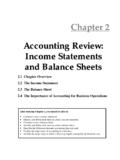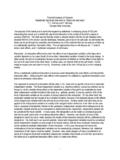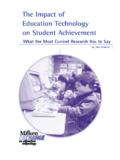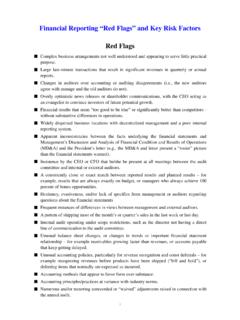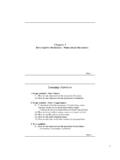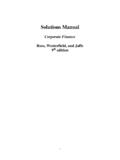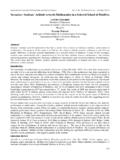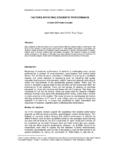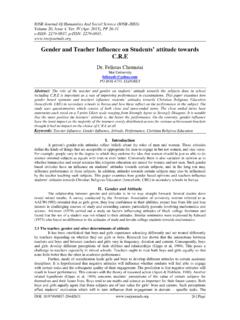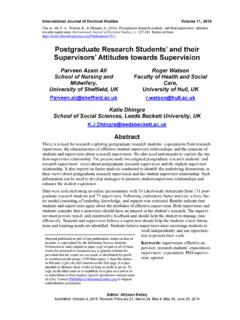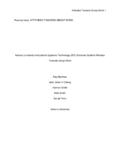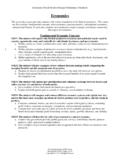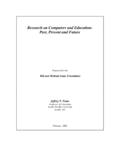Transcription of Attitude of students and parents towards the …
1 Educational Research and Review Vol. 1 (9), pp. 347-349, December 2006 Available online at ISSN 1990-3839 2006 Academic Journals Short Communication Attitude of students and parents towards the teaching of sex education in secondary schools in Cross Rivers State DR. OGUNJIMI, Physical And Health Education Unit, Department Of Vocational And Special Education University Of Calabar, Calabar. E-mail: Accepted 8 December, 2006 This study was conducted to investigate the disposition of students and parents towards the inclusion of sex education in the school curriculum in Cross River State. Using a random sampling technique, 602 secondary school students and 180 parents from Calabar, were selected for the study.
2 Data were collected with the aid of self administered questionnaire and analysed using descriptive statistical techniques. The majority of the students ( ) and parents ( ) were in support of the inclusion of sex education in the school curriculum. They believed that the teaching of sex education would compliment efforts being made towards the control of HIV/AIDS. Baseb on the results of the study, some recommendations were generated. Key words: Attitude , Student's Attitude , Parental Attitude , Teaching, Sex Education, Cross River State, Nigeria INTRODUCTION Newspapers, periodicals, journals and magazines often carry sensational stories of teenage sex escapades, pregnancies, sexually transmitted diseases like gonorrh-oea, syphilis and herps (Oikeh, 1981, Adegboyega, 1986, Moodu, 1988 and Fabiyi, 1995).
3 Most recently (relatively) but more dangerous are the reported cases of Acquired Immuned Deficiency Syndrome (HIV AIDS), while the reports of expulsion of pregnant students by school auth-orities were also common (Ehinmowo, 1981, Momodu 1988). Akingba (1971) claimed that nearly one million adolescents aged 15 -19 years become pregnant in the United States of America yearly and about 30,000 pregn-ancies occur out of wedlock and are unintended. Althou-gh up to date statistics were not available about the situa-tion in Nigeria, there is no doubt that hundreds of Nigeri-an teenage girls roam about the streets of Nigeria s urban centers offering themselves to various men for economic gains.
4 These sex escapades often result in pregnancies, venereal diseases and at some other times, fatal abortion. What are the causes of this social phenomenon? Trefor (1975) feels that sexual resolution in its current advanced state is characterized by demands for new forms of sexual freedom from repressive codes and styles of Victorianism. Societal, religious and legal expressions. Momodu (1988) was of the opinion that victims are mainly teenager from the secondary schools which are scattered throughout the nooks and crannies of the country. Adegboyega (1986) pointed out that school girls and boys in the cities had been known to commit horrible acts in their bid to get rid of pregnancies.
5 He contended that their activities had always been influenced by what they had seen on television and cinema screens or read about on the pages of romance or pornographic materials. The current general economic depression according to Ogunjimi (1989) had forced so many ladies including house wives and single parents into trading their bodies for money (commercial sex workers). This according to him is being done to either supplement their meager financial resources or as a survival strategy. Egwu (1985) pointed out that some parents have because of poverty made use of their teenage daughters to make money from willing and in randy men.
6 Conclusively, prevailing circumstances among the vari- ous families, communities and the general societies at large have rendered the religious, moral and cultural che- 348 Educ. Res. Rev. Table 1. Distribution by sex of parents and students responses to the teaching of sex education in schools. Number of subjects: parents = 180; students = 602 Acceptance of Sex Education in the School Curriculum Yes (%) No (%) Total parents : Male 93 ( ) 3 ( ) 96 Female 76 ( ) 8 ( ) 84 Total 169 ( ) 11 ( ) 180 students : Male 349 ( ) 8 ( ) 357 Female 197 ( ) 48 ( ) 245 Total 546 *( ) 56* ( ) 602* GRAND TOTAL 715 ( ) 67 ( ) 782 *Sub-totals class total. ck and balances in matters concerning human sexuality extremely irrelevant and moribund.
7 In view of the foregoings, the question thus, arises on how the society would meaningfully and constructively address the social malaise in the interest of the present and future generations. It is noteworthy, however, to ob-serve that various recommendations have already been put forward by so many scholars. Akingba and Gbajumo (1970), Ehinmowo (1981), Wgwu (1985) as well as Adegboyga and Fabiyi, 1994) were of the opinions that the teaching of sex education should be institu-tionalized at the secondary school level. Their recomme-nddations according to them were based on the fact that there was a high involvement of adolescents in sexual activities and that this development had made them much more vulne-rable to the killer disease ably referred to as hydra-hea-ded afflicted (HIV/AIDS).
8 Fabiyi (1995) contended that recommendation by exp-erts may not be enough. Sex education according to him must be accepted by students and parents them-selves as an appropriate subject to be taught in schools if a successful sex education programme is to be introduced in secondary schools. Oikeh (1981) blamed emotional rather than logical approaches to the evaluation of the need for the teaching of sex education, for the controver-sy that has inundated the institutionalization of the prog-rammed in most parts of the world of the world. This study was therefore conducted to ascertain whe-ther the parents and students in Cross River State are in support of the teaching of sex education in second-dary schools.
9 METHODOLOGY The sample consisted of 602 secondary school students and 180 parents from Calabar, the state capital of Cross River State as shown in Table 1. Using random sampling technique 51 sixth year (SS3) students were selected from each of twelve randomly selected secondary sch-ools in Calabar. For the purpose of this study, Calabar was divided into four zones. Three schools were random- ly selected from each of the four zones. Six hundred and two (602) of the 612 students that completed the questi-onnaire were used for the study. The sample consisted of 357 ( ) male and 245 ( ) female students as shown in Table 1.
10 Also 96 ( male parents and 84 ( ) female parents participated in the study as shown in Table 1. The instrument for data collection was a self admini-stered questionnaire developed by the author. Face and content validity was confirmed by two professional collea-gues. The questionnaire solicited information on the sex education to be taught in the second schools. They were asked to indicate by identifying reason for their choice as contained in the questionnaire. Findings The data revealed that a majority of the students 546 ( ) and most parents 169 ( ) were in support of the teaching of sex education in secondary schools (Table 1) 470 ( students and 163 ( ) parents indicated that the teachings of sex education would help to stem the tide of HIV /AIDS infection.))

